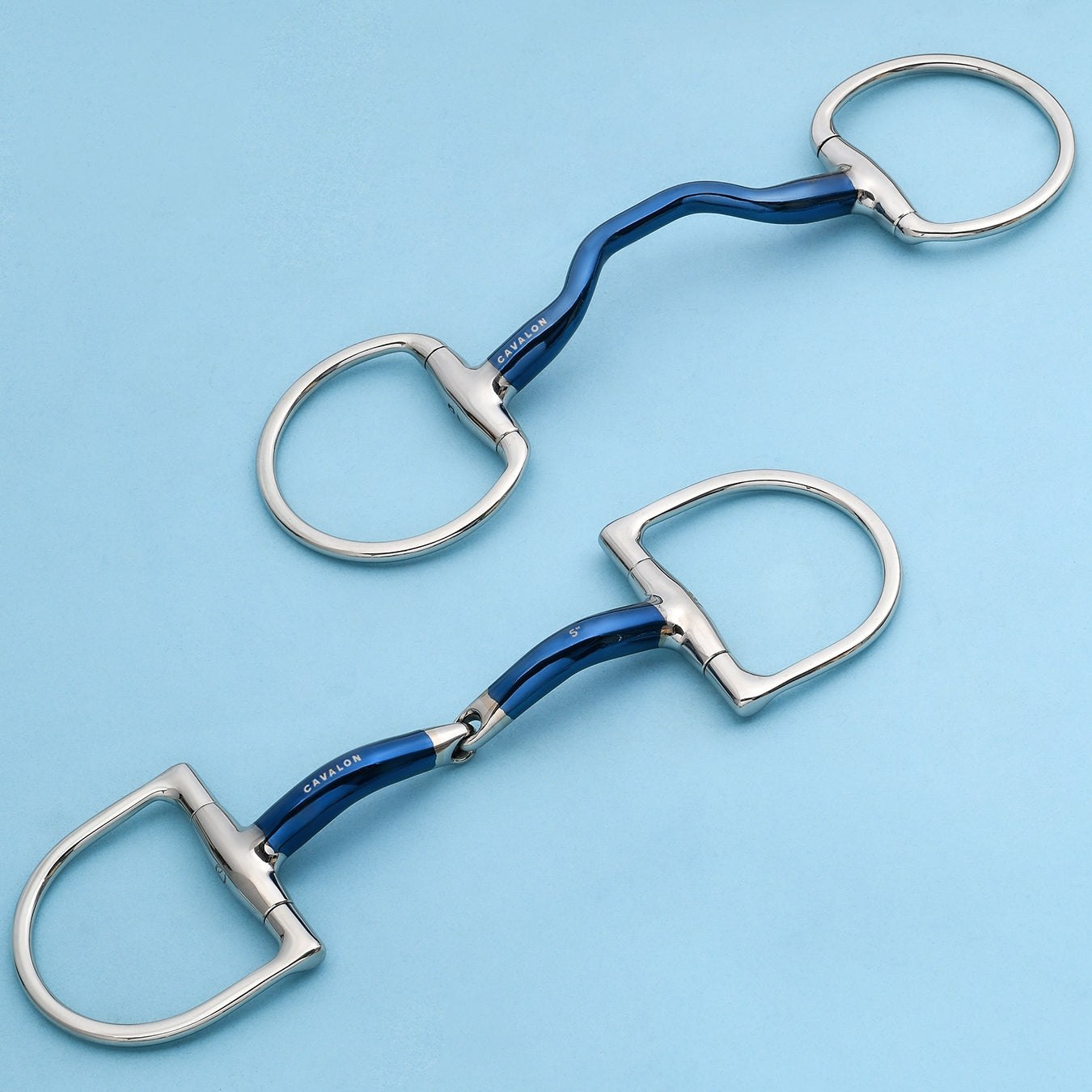Why Is My Bit Rusting? Here’s Why It’s a Good Thing
Why Is My Bit Rusting? Here’s Why It’s a Good Thing

Have you noticed your shiny new sweet iron bit starting to rust after just a few rides? Don’t worry—this is not a defect but an intentional feature! Sweet iron bits are uniquely designed to oxidize when exposed to moisture and air, creating numerous benefits for your horse. Let’s break it down:
Why Does Sweet Iron Rust?
Sweet iron is a material that naturally reacts with moisture and oxygen to form a layer of rust. While rust might seem undesirable, in this case, it’s exactly what makes these bits so effective. The rusting process produces a subtle sweetness that horses love, encouraging them to salivate. Increased salivation acts as a natural lubricant, promoting bit acceptance and resulting in a softer, more responsive ride.
The Benefits of Sweet Iron Bits
- Sweet Flavor: The rust layer creates a mild, sweet taste that horses find appealing, helping them relax and accept the bit more willingly.
- Warm Metal: Sweet iron quickly warms to your horse’s body temperature, offering a more comfortable experience, especially in colder weather.
- Encourages Salivation: The sweet taste and warmth stimulate salivation, which keeps the mouth soft and reduces tension.
How to Care for Your Sweet Iron Bit
Sweet iron bits are easy to maintain, but a little care goes a long way in ensuring their longevity and comfort for your horse. Here’s how to care for your bit:
- Wipe After Each Use: After every ride, wipe your bit with a clean, dry cloth to remove saliva and food particles.
- Inspect Regularly: Check for any signs of excessive rust or rough edges. A surface layer of rust is normal and beneficial, but the bit should remain smooth.
- Light Sanding if Necessary: If rough spots develop, gently sand them with fine wet/dry sandpaper or a scouring pad to restore the smooth surface.
- Store Properly: Keep your bit in a cool, dry place to prevent unnecessary rusting. For long-term storage, apply a thin layer of vegetable oil to create a protective barrier against moisture.
Is the Rust Harmful?
No, the rust is completely harmless to your horse. In fact, it’s a key feature of sweet iron bits. However, if left in damp environments for extended periods, excessive rust may develop, which can make the surface rough. Regular maintenance prevents this and ensures your bit remains in top condition.
What If My Bit Starts to Look Rough?
Over time, sweet iron bits may develop a blackened or slightly rough surface. This is normal and can be easily addressed. Soak the bit in warm water and clean it gently with a cloth or sandpaper. If the bit becomes deeply pitted or sharp, it’s time to replace it for your horse’s comfort and safety.
Why Does My Sweet Iron Bit Rust Before Use?
Sweet iron can begin oxidizing even before use due to its natural reaction to moisture and air. This is normal and does not affect the bit’s performance. If you’d like to slow down this process, wipe the bit clean and apply a thin coat of vegetable oil before use.
Final Thoughts
Rust on your sweet iron bit is not just normal—it’s a sign that the bit is functioning exactly as intended. Sweet iron bits are designed to encourage salivation, improve bit acceptance, and create a more comfortable experience for your horse. With proper care, they’ll remain a valuable addition to your tack for years to come.
Have you noticed your shiny new sweet iron bit starting to rust after just a few rides? Don’t worry—this is not a defect but an intentional feature! Sweet iron bits are uniquely designed to oxidize when exposed to moisture and air, creating numerous benefits for your horse. Let’s break it down:
Why Does Sweet Iron Rust?
Sweet iron is a material that naturally reacts with moisture and oxygen to form a layer of rust. While rust might seem undesirable, in this case, it’s exactly what makes these bits so effective. The rusting process produces a subtle sweetness that horses love, encouraging them to salivate. Increased salivation acts as a natural lubricant, promoting bit acceptance and resulting in a softer, more responsive ride.
The Benefits of Sweet Iron Bits
- Sweet Flavor: The rust layer creates a mild, sweet taste that horses find appealing, helping them relax and accept the bit more willingly.
- Warm Metal: Sweet iron quickly warms to your horse’s body temperature, offering a more comfortable experience, especially in colder weather.
- Encourages Salivation: The sweet taste and warmth stimulate salivation, which keeps the mouth soft and reduces tension.
How to Care for Your Sweet Iron Bit
Sweet iron bits are easy to maintain, but a little care goes a long way in ensuring their longevity and comfort for your horse. Here’s how to care for your bit:
- Wipe After Each Use: After every ride, wipe your bit with a clean, dry cloth to remove saliva and food particles.
- Inspect Regularly: Check for any signs of excessive rust or rough edges. A surface layer of rust is normal and beneficial, but the bit should remain smooth.
- Light Sanding if Necessary: If rough spots develop, gently sand them with fine wet/dry sandpaper or a scouring pad to restore the smooth surface.
- Store Properly: Keep your bit in a cool, dry place to prevent unnecessary rusting. For long-term storage, apply a thin layer of vegetable oil to create a protective barrier against moisture.
Is the Rust Harmful?
No, the rust is completely harmless to your horse. In fact, it’s a key feature of sweet iron bits. However, if left in damp environments for extended periods, excessive rust may develop, which can make the surface rough. Regular maintenance prevents this and ensures your bit remains in top condition.
What If My Bit Starts to Look Rough?
Over time, sweet iron bits may develop a blackened or slightly rough surface. This is normal and can be easily addressed. Soak the bit in warm water and clean it gently with a cloth or sandpaper. If the bit becomes deeply pitted or sharp, it’s time to replace it for your horse’s comfort and safety.
Why Does My Sweet Iron Bit Rust Before Use?
Sweet iron can begin oxidizing even before use due to its natural reaction to moisture and air. This is normal and does not affect the bit’s performance. If you’d like to slow down this process, wipe the bit clean and apply a thin coat of vegetable oil before use.
Final Thoughts
Rust on your sweet iron bit is not just normal—it’s a sign that the bit is functioning exactly as intended. Sweet iron bits are designed to encourage salivation, improve bit acceptance, and create a more comfortable experience for your horse. With proper care, they’ll remain a valuable addition to your tack for years to come.


1 comment
GOOD!